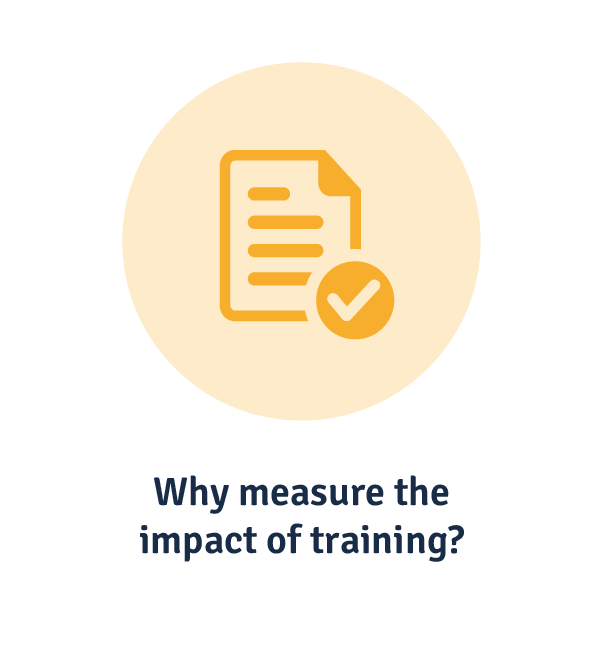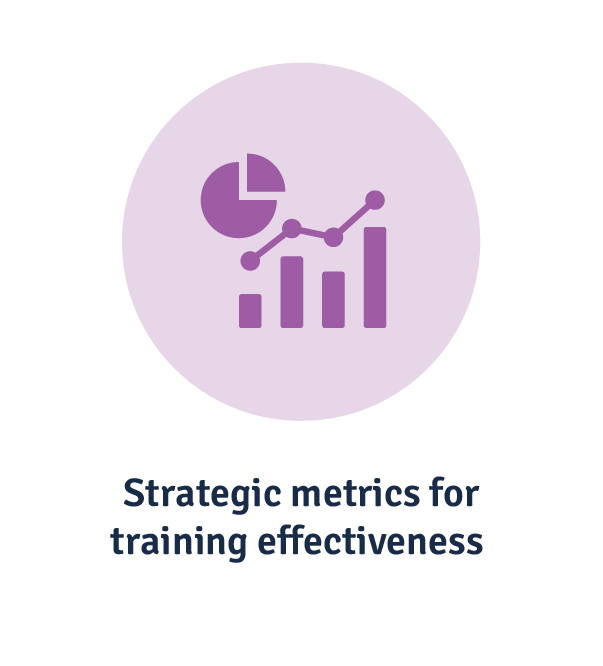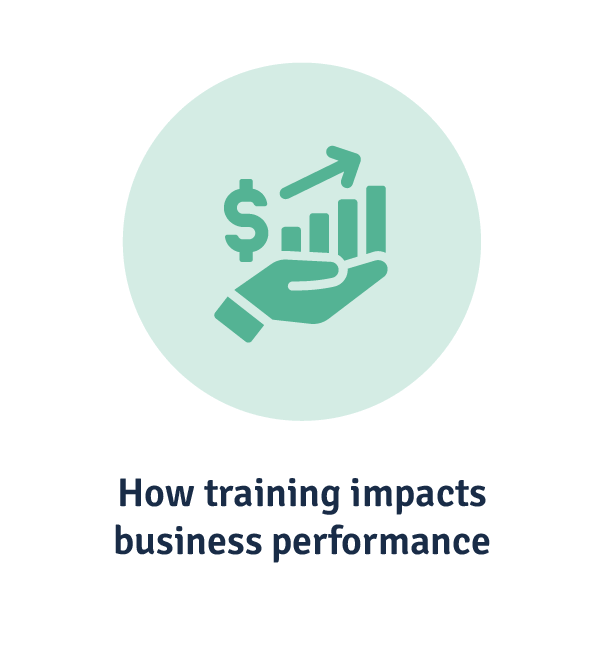Accurately defining, measuring and interpreting the impact of training and development on employee performance is a major element of human resource management.
Yet, it’s not always easy to shape L&D metrics that reflect and impact strategic business outcomes while also positively impacting employee productivity.
We’re here to tell you it can be done. The intrinsic link between effective employee training and competitive advantage, plus how to create metrics that definitely prove this, are all outlined in the guide below.
What is training effectiveness?
Training effectiveness is a measure of how well employee training programs impact employee performance in line with your organisation’s expectations for transfer of learning.
Essentially, it’s how you determine if your strategic training and development programs are having the desired business impact.
Why measure the impact of training on employee performance?
At a high level, measuring the impact of training and development on employee performance shows how useful employees find your learning methods and therefore, any room for improvement.
But to take a more nuanced approach, training effectiveness is a key KPI for strategic learning and development. A significant sum is given to organisational training and development—emphasis on the organisational.
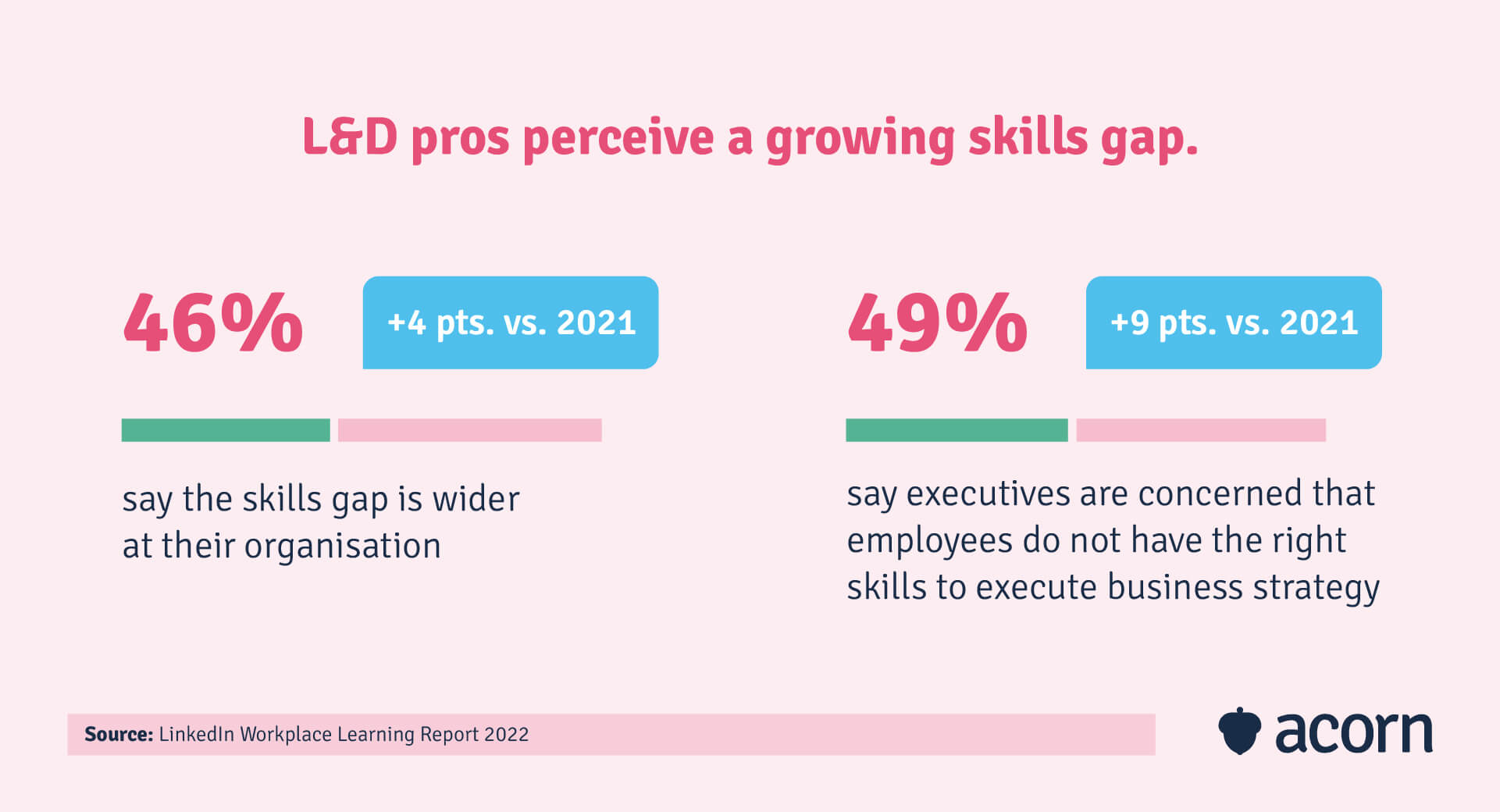
This may explain why business leaders don’t put much stock in traditional L&D KPIs like knowledge retention or time to proficiency. They want to know about metrics that move the needle, like:
- Business process improvement
- Revenue growth
- Employee engagement
- Turnover and retention
- Individual performance
- Response to market.
Aka, metrics that show a business impact.
If you don’t attempt to measure training effectiveness, let alone measure it accurately, then you’re not going to be able to show that training and development is a worthwhile business investment. In layman’s terms: You simply can’t prove training ROI.
And that creates a flow-on effect where:
- Business improvements from employee training aren’t guaranteed or replicable
- Training can’t solve business pain points (since you can’t prove you understand them)
- There’s no quantifiable impact for not doing L&D, but there’s no tangible argument for doing it either
- You won’t have a business case for your budget
- Securing buy-in from champions for any future training and development program will be an uphill battle
- Employee engagement will dive, only deepening the lack of alignment between L&D and business objectives.
In essence: This is the KPI that shows the need for L&D at all.
Proving the business impact of L&D is the problem that drove us to pioneer the performance learning management system (PLMS). Powered by AI, it’s the only solution that guides learners step by step to master the capabilities of their job roles. By codifying and mapping capabilities to learning experiences, you can measure behavioural improvements and impact on performance, not completions. That also enables you to prove and capture knowledge transfer, too.
How to design strategic metrics for training effectiveness
Before you can measure the impact of training and development on employee performance, you need to know your guardrails.
We’ll defer to the Kirkpatrick evaluation model here, aka one of the most popular methods of analysing the efficacy of a training program. The model actually asks that you measure efficacy at different stages of the learning journey, rather than solely after the fact. The one thing we ask is that you use the Kirkpatrick model on its head. The order in which they were originally set out isn’t the clearest path to strategic L&D, but the reverse order is.
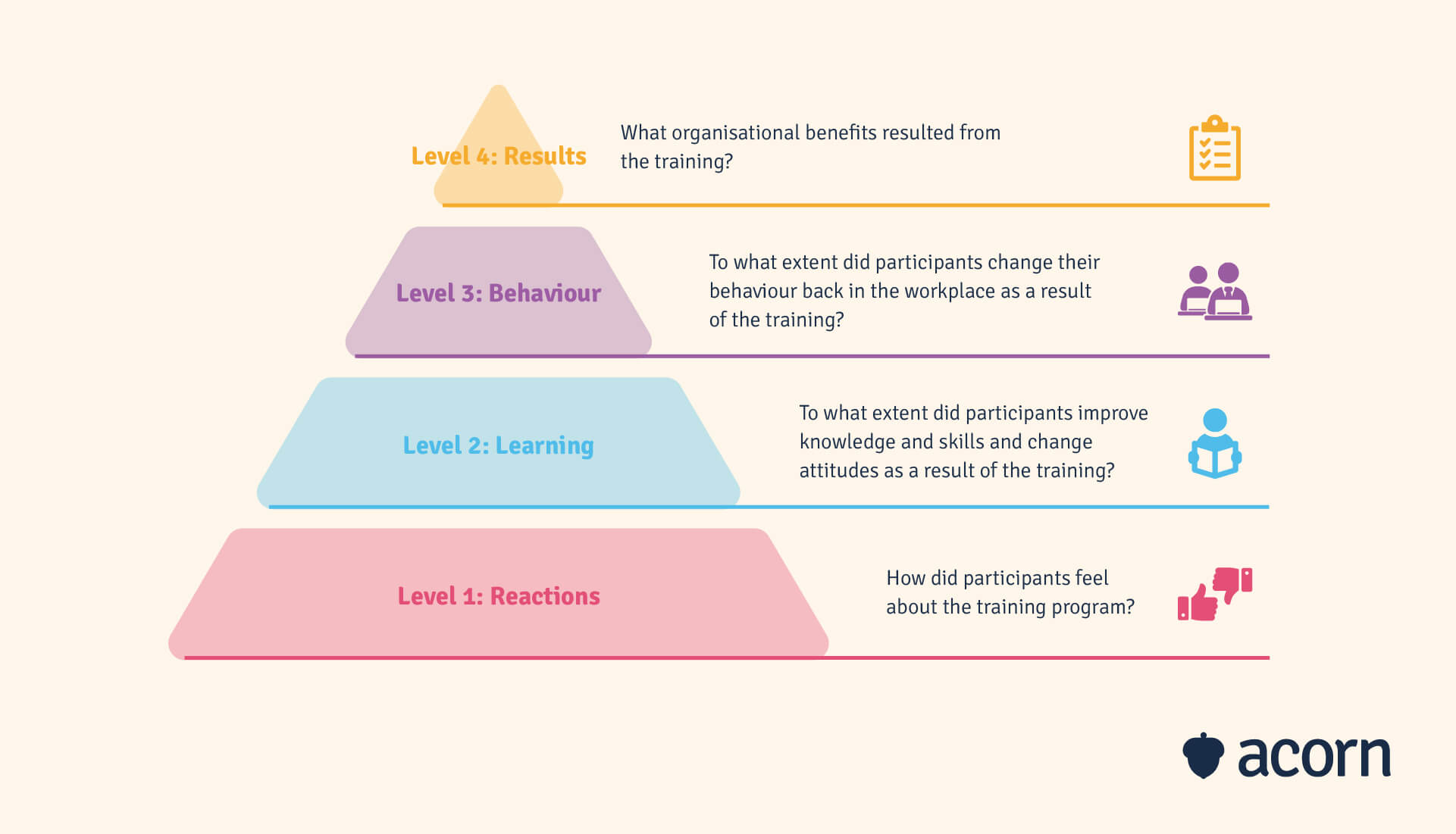
The advantages of assessing the impact of learning this way include real-time identification of:
- Capability gaps (emerging and existing)
- Issues with program design
- Cultural problems that affect training transfer.
4. Results
Let’s revisit some of those strategic L&D metrics we previously outlined.
- Business process improvement
- Revenue growth
- Employee engagement
- Turnover and retention
- Individual performance
- Response to market.
If these are the business outcomes that training and development opportunities are meant to affect, then it stands that effective training programs should be shaped around them.
Essentially, you want to define the results you want in order to design more relevant performance outcomes and learning content. To make these work for employee development plans, think in terms of capabilities with quantitative KPIs, e.g. number of closed deals in sales or employee turnover rates in human resources.
This’ll ensure you’re actually talking in business language when demonstrating training effectiveness on the other end, making it easier to define value for executives and position L&D as a business partner.
3. Behaviour
Here, performance outcomes start to emerge as you measure behavioural change and the strength of your learning culture.
That means metrics like:
- Job satisfaction
- Employee engagement
- Team culture and effectiveness.
Capabilities are again helpful when it comes to attaining quantitative data here. Many capability frameworks will incorporate behaviours and attributes that are necessary for metrics like team effectiveness. Performance evaluations and capability assessments done by managers are generally the starting point for understanding the depth of behavioural change in the workplace.
Surveys can help gauge team dynamics, particularly to uncover if the culture supports post-training enablement. Think questions like:
- Do you have the resources and support you need to apply new skills in the workplace?
- Do you feel you receive enough feedback from your direct manager?
- On a scale of 1 to 10, do you trust you coworkers to provide helpful feedback?
2. Learning
This is the stage at which you assess the rate of skills application, or essentially what was or wasn’t learned as a direct result of training.
Two key metrics here include:
- Transfer of training
- Time to proficiency.
Methods of assessment at this stage generally involve competency. On the quantitative side of things, that’d be pre- and-post training competency assessments that show the change in performance against your organisation’s defined standards (aka your capability framework).
For qualitative data, self-assessments are the way to go. A discovery tool can be helpful here, especially with guiding questions or statements tied to specific capabilities.
1. Reaction
Reaction measures how employees respond to training programs.
Setting strategic KPIs here isn’t quite possible. This is only the jumping off point for proving training effectiveness. However, you can set metrics that enable process improvement and more effective training design.
Some examples of metrics you might employ here include:
- Progression rates
- Completion rates
- Net promoter score.
As this is considered a more superficial level of evaluation, visual data is your best friend. An eLearning platform can offer engagement data through reporting analytics and in-system surveys. Try to gather qualitative and quantitative data with survey questions like:
- Which content format was the most engaging?
- On a scale of 1 to 10, how valuable did you find this topic to your day-to-day?
- Was this course easily accessible for you?
How exactly does training impact organisational performance?
To further build the business case for your training and development programs, you need to draw a direct line between organisational drivers and success. That means that seeking to enhance employee performance, let alone proving the value of training and development plans, always comes back to what drives an organisation towards its goals: The workforce.
This isn’t us grandstanding; the ability of your employees to carry out crucial tasks and perform key skills and behaviours will make or break business success.
Which brings us to one of our favourite topics to discuss: Capabilities. As a refresher, capabilities are the key skills, behaviours, processes, tools and systems that drive meaningful business results. They can be business-focused, defining your organisation’s structure, or aimed towards assessing and developing employee job performance.
By nature, capabilities are designed to shape business iteration or transformation. They are a stable representation of what your organisation can and will do to achieve its goals. Building organisational capability (i.e. the collective capacity of your organisation to deliver its objectives) directly depends on the strength of training and development.
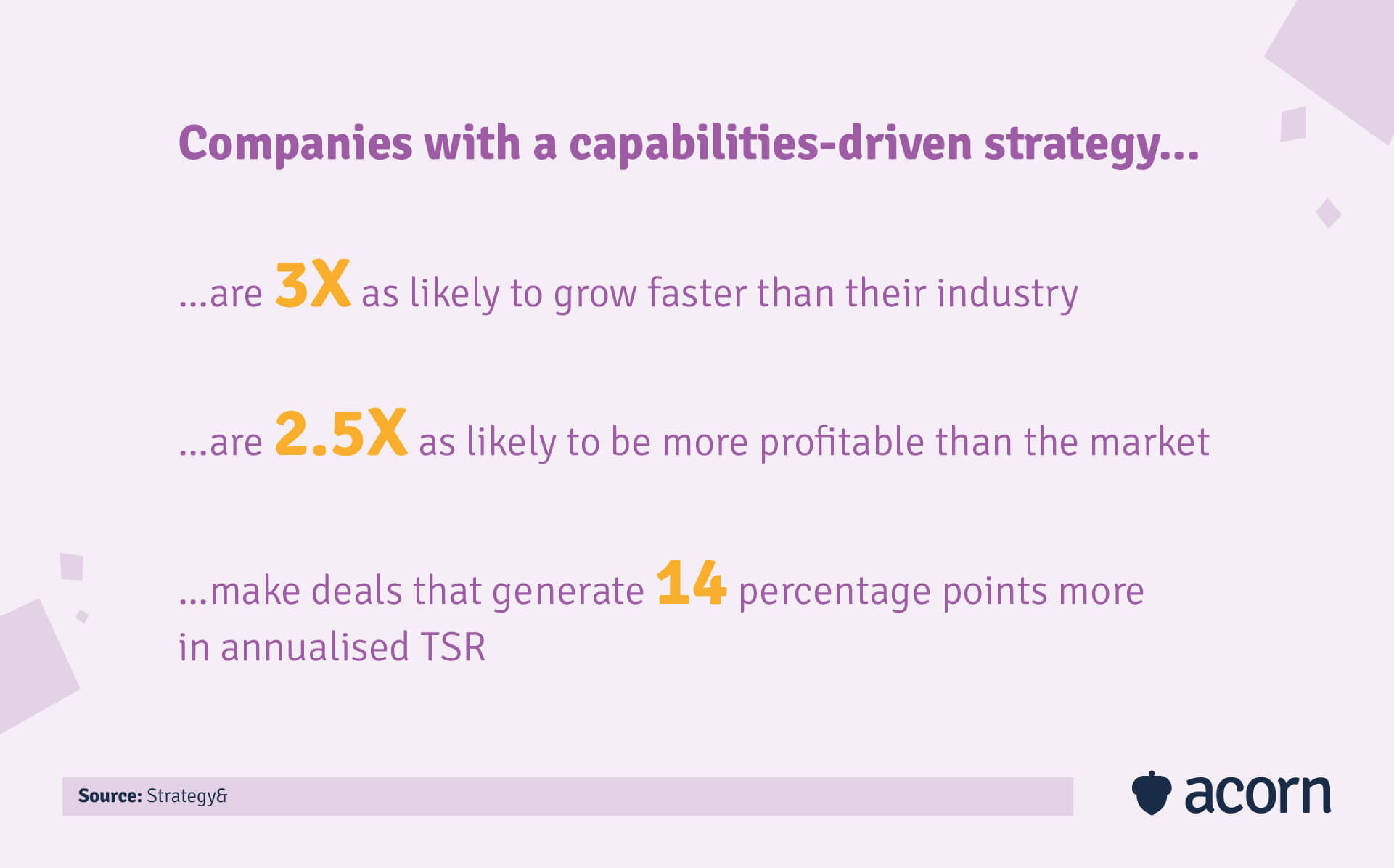
And there are many potentially unstable processes in your workforce that depend on said organisational capability. Leadership pipelines, recruitment (especially in volatile job markets) and capacity planning are just some of the processes that require a stable through-line directly aligned with business strategy. Take a capability like Service delivery. That’s trainable, directly performance-driven and also likely a big driver of customer relationships.
Ergo, capability-led training is the way to not only prove training effectiveness, but to ensure organisational success.
Key takeaways
Generic annual training courses won’t cut it when trying to deliver strategically impactful L&D. The skills, behaviours and knowledge employees need, and the training to develop said skills, behaviours and knowledge, should be directly derived from the business outcomes they’re working towards.
This will generate more robust data with which to evaluate the efficacy of learning and its impact on employee performance. In short:
- Start by creating tangible employee KPIs from business metrics (capabilities are most helpful here)
- Define metrics to assess behavioural change and the strength of your learning culture
- Assess the gaps between learning and application
- Understand if learning delivery is engaging, timely and relevant for employees.
And don’t stop evaluating, either. Consistent critical evaluation will only generate more comprehensive data for proof of impact.
Related Reads on This Topic

How to Measure and Prove ROI in Training & Development
ROI in training is crucial for measuring the business impact of training. We dive into how to calculate it for your training program…

Effective Strategies to Improve Transfer of Learning in the Workplace
Achieving tangible transfer of learning comes down to the strength of your training content, learning culture, and training evaluation…

Why Facts, Evidence & Data are the Only Way to Demonstrate the Impact of Learning
Change the perception of L&D by creating win-win partnerships and uncovering the performance outcomes that drive business outcomes…

